There are only two things that touch the ground on a mountain bike and that’s the tires. A good tread pattern and beefy front tire will do wonders on riding terrain. It’s never a bad idea to consider upgrading them. We do a deep dive on the best brands and what to look for in a good tire in our article: Wheels on the Bike Go Round & Round – The Best Mountain Bike Tires. Another thing to consider is to get Tubeless mountain bike tires.
Mountain Bike Tires Are Now Tubeless?
When we first heard about them in our local shop, I stood there staring in total shock. Talk about advancements in the game! When you think about it, it makes sense that there are tubeless mountain bike tires. Cars have gone without a tube since 1947 to help reduce weight and provide cost savings on gas mileage.
Benefits Of Changing
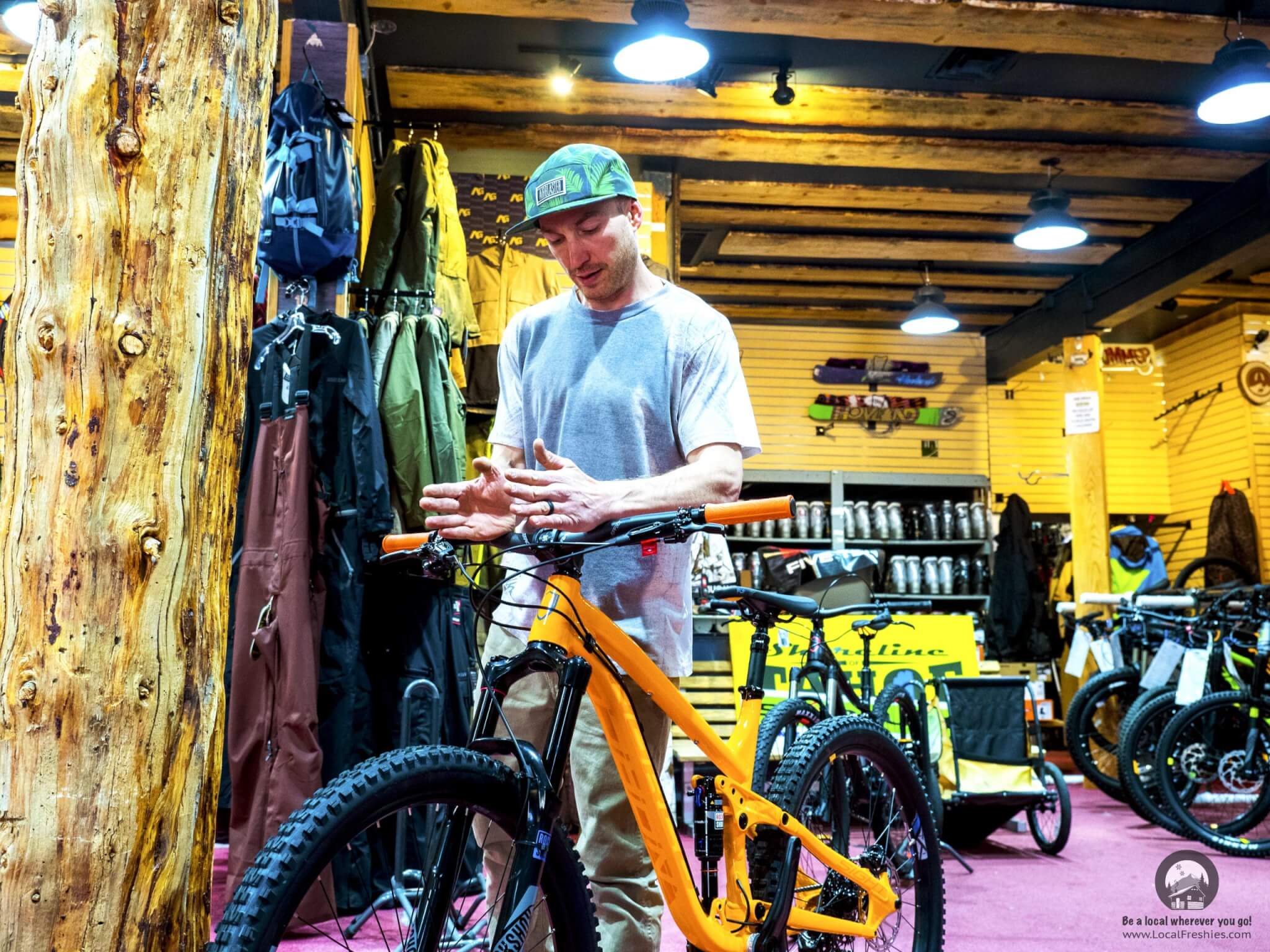
Similar to the car tire without a tube, removing this inner rubber does reduce weight meaning your bike is lighter. On average, you’ll get an overall weight savings of 150 – 650 grams per wheel translating to around a pound a wheel. This isn’t the real reason people are converting though. Rather, it’s a multitude of advantages. For starters, they’re less prone to going flat. If you do run into certain tire troubles, you can fix them much quicker.
Let’s Get Low
The biggest and by far most important benefit is you can run a lower tire pressure. This translates to a more comfortable ride since your tires will roll over small obstacles instead of bouncing you about. Due to more of the tire surface touching the ground, it also increases the amount of traction you get.
Drawbacks
We know what you’re thinking. Aw man, this sounds awesome! If you do make the leap, be aware that switching over can be quite expensive. Compared to a tube, you’ll also need to maintain the seal by adding sealant annually or even every few months depending on the climate you live in. If you do the conversion yourself, it can get quite messy due to the sealant. Also, getting the tire bead to seat on the rim correctly is challenging. It HAS to be airtight, or you’ll get a flat on the mountain. Unless you’re mechanically inclined, we suggest letting the professionals do it.
Who Can Convert?

Unfortunately, not all tires and tire rims are made the same. To see if you can easily do a MTB tubeless conversion, you’ll have to see if your bike rim supports this configuration. You’ll see a sticker that reads “Tubeless Rim” or “TR” right on the rim. Next, check the labels on your mountain bike tires to also see if they have a “TR” or “TC” on them.
Differences Between Tubeless Ready & Tubeless Compatible
You might be wondering if there’s a difference between a Tubeless Ready rim versus a Tubeless Compatible? The answer is it depends. Unfortunately, the mountain biking industry hasn’t explicitly decided what either of these stand for. Rather, you need to look at the rim manufacturer’s details on meanings. With that being said, there is one quick identifier that DOES help – UST.
UST – Gold Standard
Standing for Uniform System Tubeless standard, there IS a standard set of criteria a manufacturer must meet to have this label. A UST tire will contain a square shaped bead that locks perfectly to the UST rim. In addition, within the actual tire you’ll find a butyl liner that’s similar to the material found inside a tube except it’s built INTO the tire already. This does NOT increase weight, but rather provides further seal. In fact, it fits so well that you can use a UST tire AND rim without sealant.
How Tubeless Tires Work
Tubeless mountain bike tires have a structure similar to a car tire meaning if you stand them up, they hold their shape. Another feature is the sidewall has a hooked design so that it can catch and hold the bead (i.e. seal). In addition to the tire, the rim is very important. Its job is to hold onto the tire and make sure it doesn’t pop out or off while you’re riding or get into a biking snafu. To think about it in really simple terms, for a tube tire, the tube is holding everything together while in a tubeless setup, the rim is the one holding on. Finally, there is an additive inside the tubeless tire that if you do get a puncture, all you need to do is pump a ton of air quickly into the tire to reseal it!
Go Ghetto – Tubeless
We understand mountain bikes and their accessories are expensive. If you’re a casual rider that spends most of your time in meadows and hitting single tracks, you could get away with what many call “ghetto-tubeless”. This is where your rim isn’t a “TR,” but you still don’t want to have a tube. You would still use sealant tape to create an air tight fit but also pump in an additive such as Stan’s Sealant to help create a stronger seal between tire and rim.
Slime Isn’t Just For Ghostbusters
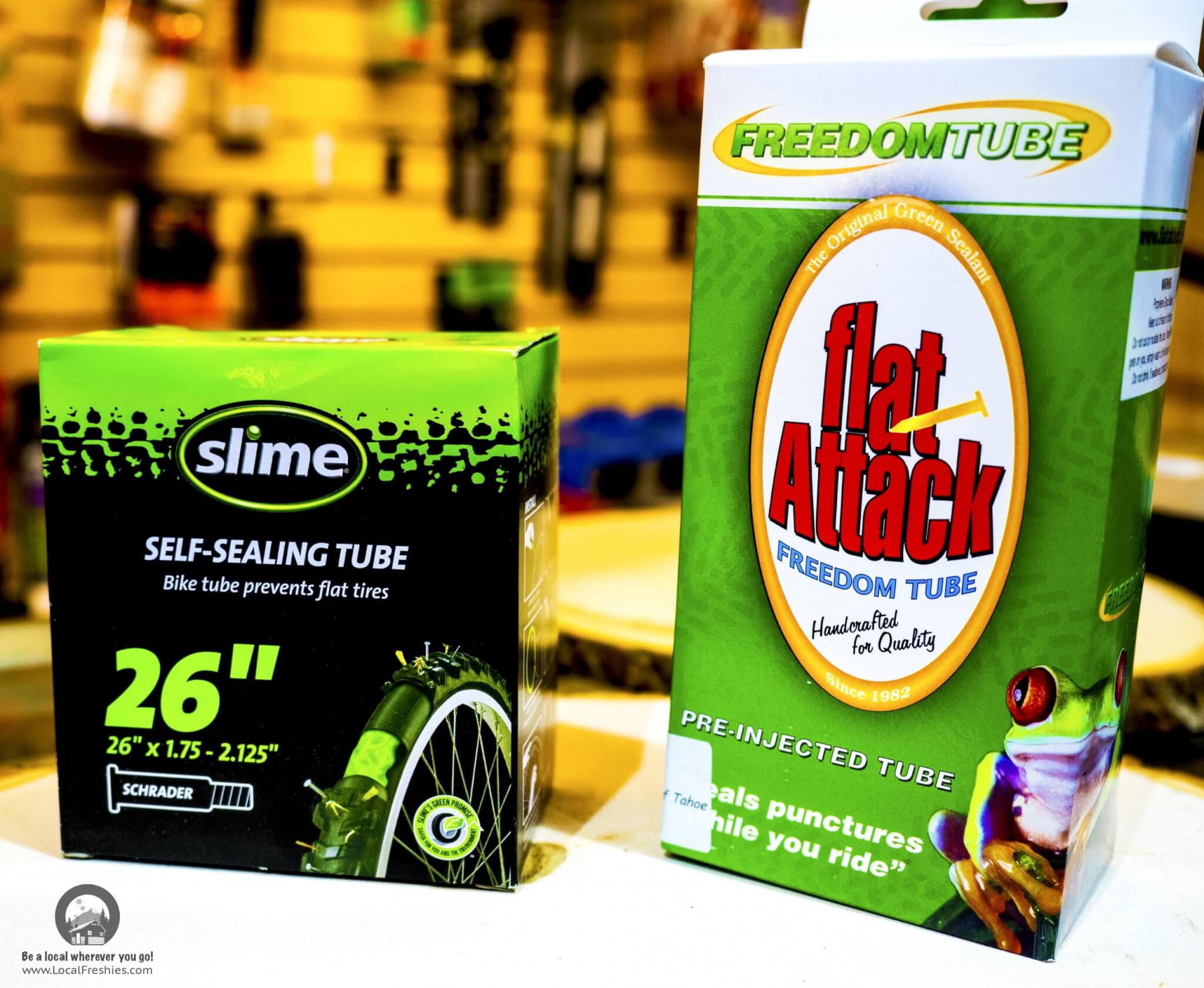
Another option if you don’t want to take the risk of going “ghetto” but still want a little extra protection, you can try out tubes already filled with what they call “slime.” Like they always say… “You get what you pay for.” If you were to get a small puncture, the slime will help seal the tire, but if it’s a pinch flat, sidewall puncture, or something bigger, it may not work.
Tire Inserts
If this wasn’t confusing enough, there’s another piece of technology that has come into the tubeless mountain bike tires games – inserts. Made out of foam, they seem to be the next innovation on making mountain biking that much more fun. The main advantage is that the foam protects the rim from damage if you’re riding an especially low tire pressure. It also provides additional dampening that would make rides like Sierra Canyon’s shale sections MUCH smoother. As one of the main manufacturers says, it’s “suspension for your tires.”
The Good News
Bike manufacturers understand how crucial it is and so provide tubeless compatible components on most of their models above the $2,000 price range. That means if you’ve picked up a bike model that’s been built in the last ten years, there’s a very good chance you’ll already have what you need. Usually that’s the most expensive part to transition.
ALWAYS Check Tire Pressure
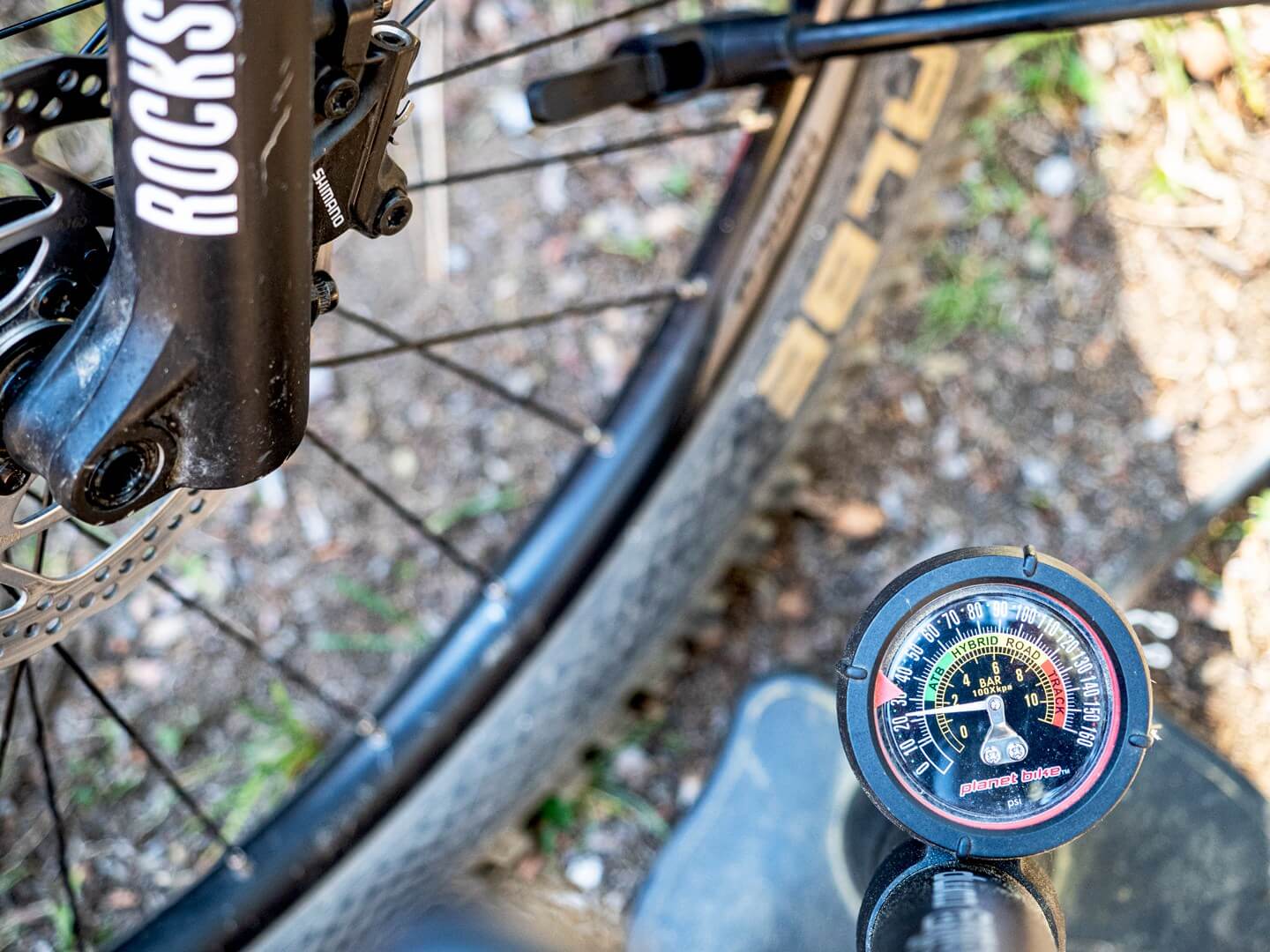
Compared to a car rim, mountain bike tires have a MUCH smaller surface to seal with. Even with a tubeless ready setup, they do tend to leak a bit of air in between rides. You should already be checking the tire pressure even with tubes before every ride so it shouldn’t be a big deal.
What Pressure To Run At
We’ve talked A LOT about lower tire pressure. How low can you go? Personally, we run about 4 lbs of pressure less than what we do with a tube. That puts us at 26 in the back and 22 in the front. It may not sound like much, but it’s a WORLD of difference. We know friends that run MUCH lower than us, but we’re way more conservative to make sure we don’t ding the rims.
Maintain That Eco-System
Besides keeping an eye on the tire pressure, you’ve now added a bit more complexity to your bike maintenance checklist. For starters, the valve core may need to be replaced every once in a while. They get gunked with sealant or they get bent which doesn’t allow air in. You’ll then need to remove the core and replace it (note: this means the tire will go flat until you pump it back up). Depending on how hot and/or dry the climate you live in is, you’ll also need to top off the sealant every six months or so.
What We Ride
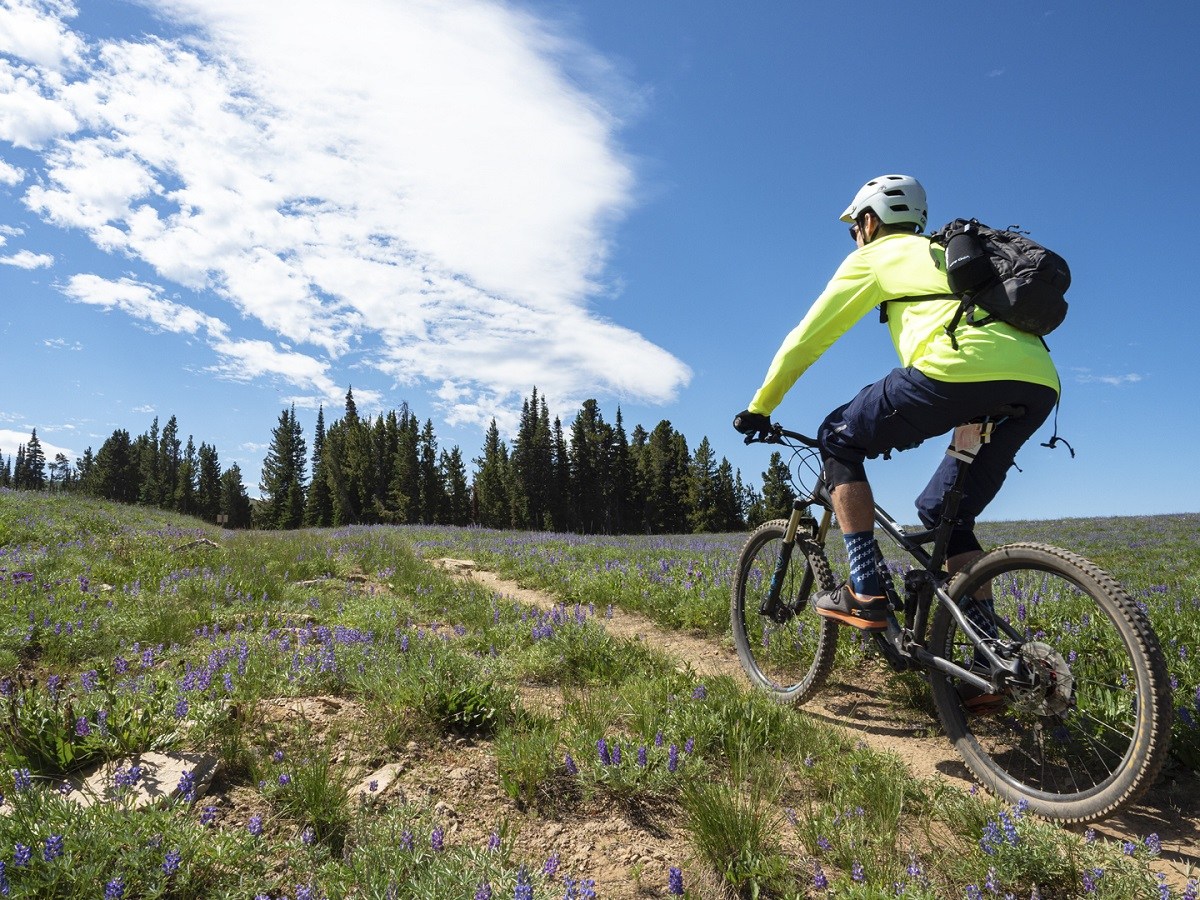
After years of mountain biking and hanging out at our local bike shop, we’ve made the leap. Our good friends at Over The Edge talked us into getting it done and boy were we glad. Instead of a full conversion, we went ghetto since our rims aren’t TR.
So Worth It
I have to admit all the advantages highlighted above are so true. We’ve noticed a HUGE difference in traction especially when our singletrack turns to moondust. Riding lower tire pressures gives us that extra bit of grip especially on soft banked turns when we’re ascending. This definitely has helped my personal Strava times. It also makes the off-road terrain much smoother. I will admit in regards to weight savings, I can’t really tell the difference.
Minor Headaches
We dropped a few hundred dollars to get it converted and even though they’re pros on conversions, sometimes the bead just refuses to set. Both Jaime and I had a tire that had to be brought in and re-done. But once they got it dialed, it’s been rock solid for us for the last few years. Worth every penny!
What To Bring On The Trail If You Go Tubeless

If you do make the jump to tubeless, this means instead of carrying a pump if you get a flat, you’ll carry a CO2 Inflator, which will inflate the tire quickly! The sealant inside the tubeless tire is filled with what looks like glitter, so when you pump up the tire FAST, the sealant heals itself. And, if you get a really serious puncture, you can always patch it with a plug – just like a truck tire. For a full rundown on what to bring on any ride: 15 Must Have Mountain Bike Accessories When You Head Out
Still Pack A Tube

99% of the time you probably won’t need it. But there’s that small percentage where you slice a gash deeper than the Suez Canal and the sealant or plug won’t work. Having a spare tube is always a good backup plan in those cases.
In the end, if you’re a bit more aggressive with riding and don’t want to spend a ton of time fixing your tires, doing a MTB tubeless conversion might be something you consider. But as stated above, you can also go with something in-between. It’s really up to you. For more on tips on how to remove the pain in your bike seat, learn how to start mountain biking, or just explore adventures you can have from the shores of Tahoe to the mighty Grand Tetons of Wyoming, click below:







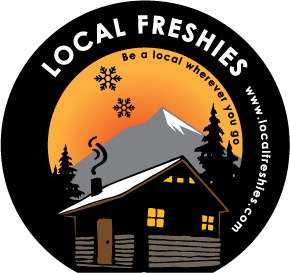

I have been tubeless on TR and non TR rims for a while now. You will find you have to check tyre pressure more often but that’s a small price to pay for such a good innovation. The only puncture has been a sidewall cut. I had to get a new tyre anyway.
In short – absolutely bloody hopeless.
Instead of having a flat tyre occasionally the tyres were always flat!
Do yourself a favour, go with tubes that you change on the trail.
Paul,
That sucks! Curious, did you do the conversion yourself? I’ve heard from many a friend that converting to tubeless is painful if you do it yourself. We had our local shop (Over the Edge in Tahoe) do it and we haven’t regretted it at all. The tires have held their air for almost two years now (aside having to be pumped up every ride which is what we do even WITH tubes).
Going tubeless for me has prevented a lot of down time replacing tubes at the edge of the trail. I don’t get snakebites with tubeless.
There is no way you can save “a pound a wheel” its more like 5 ounces per wheel at best. Also, the comparison to car tires is not a very good one. They no longer use tubes in cars because cars no longer use spoked wheels, bicycles do however and that is the reason you absolutely must use slime or even the best tubless bicycle rims and tires won’t hold air for long.
The big benefit to running tubless is flat protection, and that is enough to get most people to switch.